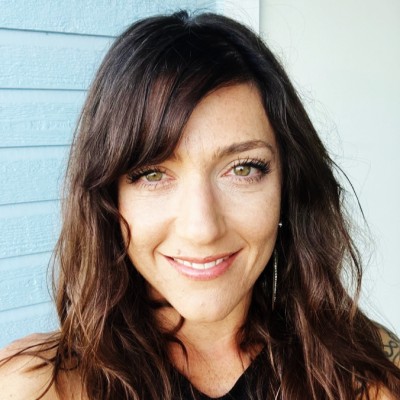
Spider veins are tiny, visible blood vessels that appear near the surface of the skin. They may be caused by genetics, aging, hormonal changes, or prolonged sitting or standing. Natural remedies won’t make them disappear, but may reduce their appearance.
Spider veins affect up to 88% of women and 79% of men at some point in their lives. While they’re typically harmless, many people find them bothersome from an aesthetic standpoint–and some can cause discomfort.
Keep reading to learn what causes spider veins to form, and explore treatment options to fade or even get rid of them entirely.
What are spider veins?
Spider veins, or telangiectasias, are tiny, damaged blood vessels visible just beneath the skin’s surface. They often resemble thin webs or branches and may look red, blue, or purple.
They form when increased pressure stretches vein walls, making them thin and transparent so the blood inside becomes visible through the skin.
While most commonly found on the legs or face, they can develop anywhere on the body.
Unlike varicose veins–which are larger, swollen, and often painful–spider veins are usually flat and painless, raising concerns only from a cosmetic standpoint. However, some people experience symptoms like:
- Throbbing
- Cramping
- Aching
- Heaviness in the legs
These sensations often occur after standing or walking for long periods, and may be accompanied by itching or burning.
Why do I have so many spider veins?
While there’s no single known cause, you may have developed spider veins due to a variety of factors, including:
- Genetics: If your parents had spider veins, you’re more likely to get them, too. This may be because of inherited vein weakness, genetic mutations, or multiple factors.
- Aging: Veins and their valves naturally weaken over time, making blood vessels more prone to dilation.
- Hormonal changes: Puberty, pregnancy, menopause, and hormone-based birth control can weaken vein valves. Estrogen plays a major role here, and during pregnancy, extra blood volume and uterine pressure can strain leg veins.
- Obesity: Carrying extra weight increases the pressure inside veins and forces their valves to work harder.
- Sun exposure: UV rays can damage skin and the small blood vessels underneath–especially on the face.
- Prolonged sitting or standing: Staying in one position for long periods–perhaps due to working in nursing, teaching, retail, or factory jobs–slows blood flow and increases vein pressure.
- Smoking: Nicotine and toxins in cigarettes narrow blood vessels and inhibit healthy circulation, raising the risk of spider veins.
Spider veins are more common in women than men, and they tend to increase with age. Any mixture of the above genetic and lifestyle factors may make you more susceptible.
Do spider veins indicate bad circulation?
In some cases, spider veins can be an early sign of mild venous dysfunction–especially if you also notice cramping, pain, or heaviness in your legs. If that’s the case, it’s worth discussing with your healthcare provider.
For most people, however, spider veins are harmless. They only involve small, surface-level veins that won’t significantly impact your overall blood flow.
How to prevent spider veins
While you can’t change factors like your age or genetics, you can protect your vein health and reduce your chances of developing new spider veins by:
- Staying active: Regular exercise improves circulation and helps keep blood from pooling in your legs.
- Avoiding long periods of sitting or standing: If you work a job that requires lots of sitting or standing, take frequent short breaks to walk and stretch.
- Maintaining a healthy weight: Less pressure on your veins means less strain over time.
- Elevating your legs: Raising your legs above heart level for a few minutes a day can help reduce pressure in your veins.
- Wearing compression stockings: These apply gentle pressure to your legs, moving blood upward toward your heart and preventing it from pooling in veins.
- Protecting your skin from the sun: Use sunscreen regularly to reduce UV damage to skin and small blood vessels.
- Balancing your hormones: Talk to your doctor if you’re experiencing hormonal changes. One helpful step may be adopting a whole-foods diet that limits processed foods, which are high in endocrine-disrupting sugar and chemicals.
- Limiting alcohol: Excessive drinking weakens the walls of small blood vessels in the face, making them more prone to breaking. Limit your alcohol intake to one or two drinks per day (or fewer).
- Quitting smoking: Again, smoking constricts blood vessels and impairs circulation, weakening vein walls. Quitting now will promote healthier blood flow and vein strength.
- Avoiding excessive heat exposure: Frequently using hot tubs or saunas can cause veins to swell and dilate, making spider veins more likely.
These habits can help boost circulation and prevent spider veins from forming–but they’re not foolproof. And if you’re already noticing spider veins, you may want to give corrective treatments a try.
How to get rid of spider veins naturally
It may not be possible to get rid of spider veins completely with natural, home remedies. These options work best for mild spider veins, or alongside medical treatments:
- Horse chestnut extract: Studies suggest this herbal remedy may improve vein tone and reduce leg swelling. You can take it orally as a supplement or apply it topically.
- Apple cider vinegar: Applying diluted apple cider vinegar to your skin might temporarily boost circulation in the area, although research is limited and inconclusive.
- Anti-inflammatory diet: Prioritizing fruits, vegetables, whole grains, and omega-3-rich fish can help support blood vessel health.
- Regular exercise: Again, activities like walking, swimming, and yoga keep blood moving through your legs, preventing and potentially reducing the appearance of spider veins.
- Avoiding tight clothing: Clothing that squeezes your waist, groin, or legs (other than compression socks) can restrict blood flow and worsen spider veins.
- Leg elevation: Again, resting with your legs above heart level a few times a day helps ease pressure in your leg veins.
These lifestyle tips support healthy circulation and may help spider veins fade slightly over time. But for more noticeable or widespread veins, you might want to consider medical treatments.
Medical treatments for spider veins
Each of these treatments works in a different way, but is effective for many people.
Sclerotherapy
This is the most common spider vein treatment. Sclerotherapy involves a doctor injecting a solution into the vein, irritating the vessel walls so they collapse and are reabsorbed by the body.
The procedure is done in-office without anesthesia and can treat multiple veins in one session. Most people see improvement after one to three treatments.
Side effects often resolve within days but can last up to two weeks. They may include:
- Mild swelling
- Redness
- Bruising
Laser therapy
Laser therapy uses focused light energy to heat and destroy small blood vessels, causing them to fade over time. It’s especially effective for tiny, surface-level veins on the face.
This noninvasive treatment doesn’t require any injections or cuts, but is also performed in a doctor’s office. You may need several sessions to see results.
Side effects include:
- Temporary redness
- Swelling
- Bruising
These symptoms typically fade within a week.
Closure system therapy (VenaSeal)
This treatment involves sealing veins with a medical adhesive delivered through a specialized catheter. After being sealed, veins shrink and the body reabsorbs them.
A doctor performs this procedure using an ultrasound and a tiny amount of local anesthesia. You may need multiple treatments.
Endovenous laser therapy
It’s more common for people to get endovenous laser therapy (EVLT), or endovenous laser ablation, for varicose veins, but some doctors use it to treat larger spider veins.
The doctor inserts a thin laser fiber into the vein through a small incision. Heat from the laser causes the vein to close and gradually disappear over several months.
This procedure requires local anesthesia and is more invasive.
Low-voltage electrical treatment (Given Needle technique)
This less common treatment uses a tiny insulated needle with a small exposed tip to deliver a precise electrical current to the vein. The current destroys the vein without damaging nearby skin.
In a small study of 30 women, this procedure effectively removed spider veins with minimal side effects. However, larger, long-term studies are needed to confirm its safety and effectiveness.
When to see a doctor
For most people, spider veins are strictly cosmetic and don’t indicate any underlying health concerns. However, you should see a healthcare provider if you notice:
- Pain, swelling, or throbbing around the veins
- Skin changes such as rashes, sores, or thickening
- Rapidly spreading veins or sudden appearance of many new ones
- A heavy, achy feeling in your legs that worsens after standing
These symptoms could indicate a more serious vein condition–such as varicose veins or chronic venous insufficiency–which may require medical treatment.
Final thoughts
Spider veins are common, and are typically harmless. They can form due to genetics, aging, hormones, lifestyle habits (such as smoking or standing for long periods), and sun exposure.
If you already have them, your main treatment options are:
- Home remedies like horse chestnut extract or apple cider vinegar, which may improve vein tone, reduce swelling, and boost circulation
- Healthy habits such as regular exercise, leg elevation, compression stockings, and an anti-inflammatory diet
- Medical treatments like sclerotherapy, laser therapy, or the Given Needle technique to dramatically reduce or even eliminate spider veins
You don’t have to live with spider veins if they bother you. Try these home remedies for mild ones, and if yours are more pronounced, talk to a qualified healthcare provider about the safest and most effective treatment for you.
References:
National Library of Medicine: Spider Veins
Treatment for telangiectasias and reticular veins – Nakano, LCU – 2021 | Cochrane Library
Clinical and Genetic Determinants of Varicose Veins: A Prospective, Community-Based Study of
Evidence of Health Risks Associated with Prolonged Standing at Work and Intervention Effectiveness
Tobacco smoking and vascular biology and function: evidence from human studies – PMC
Varicose veins of lower extremities: Insights from the first large-scale genetic study – PMC
A Review of Familial, Genetic, and Congenital Aspects of Primary Varicose Vein Disease | Circulation
A Novel Approach for the Treatment of Spider Veins – PMC
Horse chestnut seed extract for chronic venous insufficiency – PMC
(PDF) Elevate to Alleviate – Evidence Based Vascular Nursing Study
Sclerotherapy – StatPearls – NCBI Bookshelf
Treatment for telangiectasias and reticular veins.
Use of the VenaSeal closure system for the treatment of varicose veins
Effectiveness of endovenous laser treatment in eliminating superficial venous reflux – PubMed
The endovenous laser treatment for patients with varicose veins – PMC


Leave a Reply